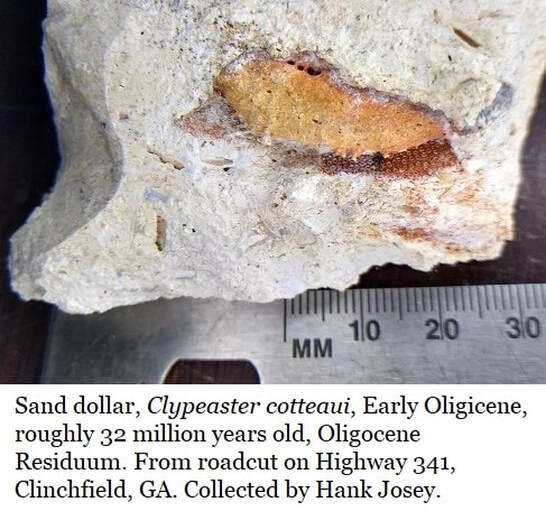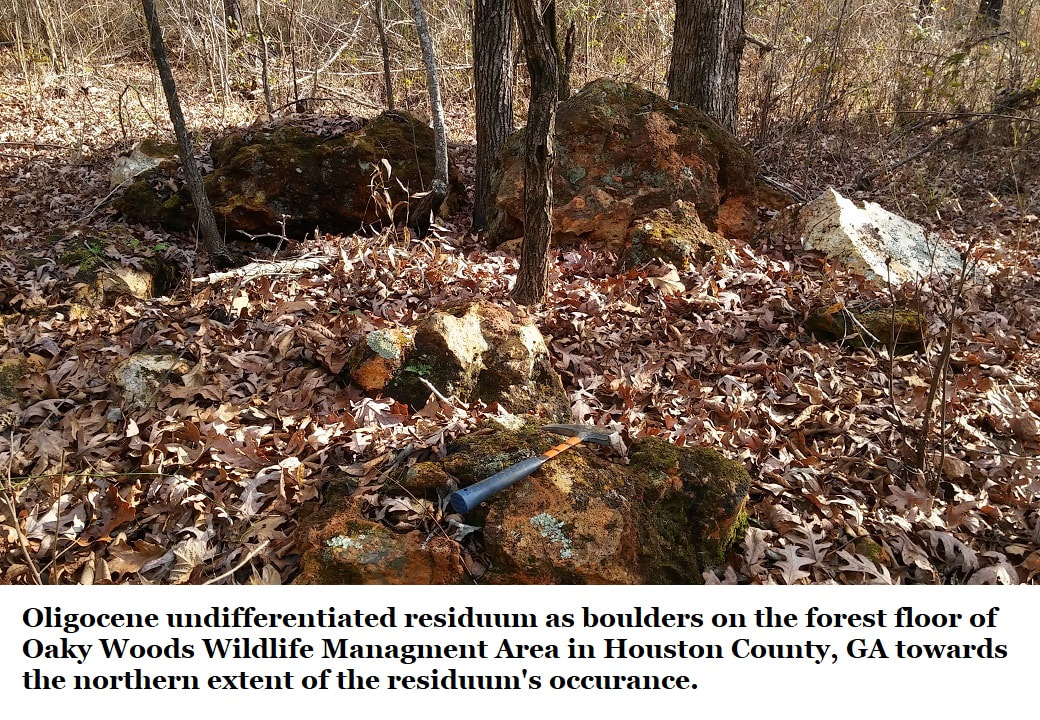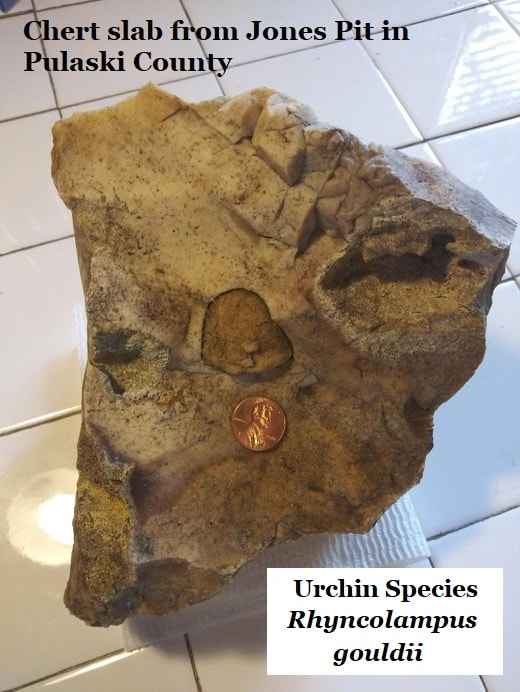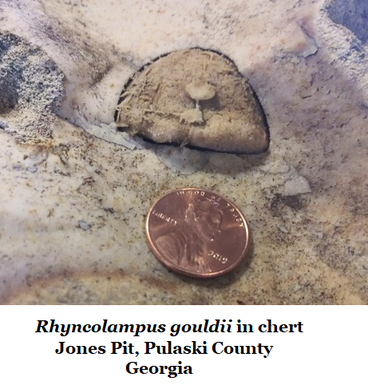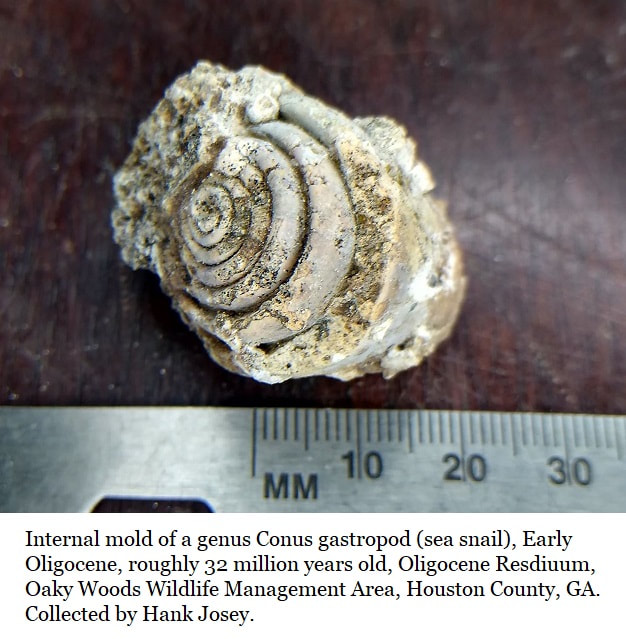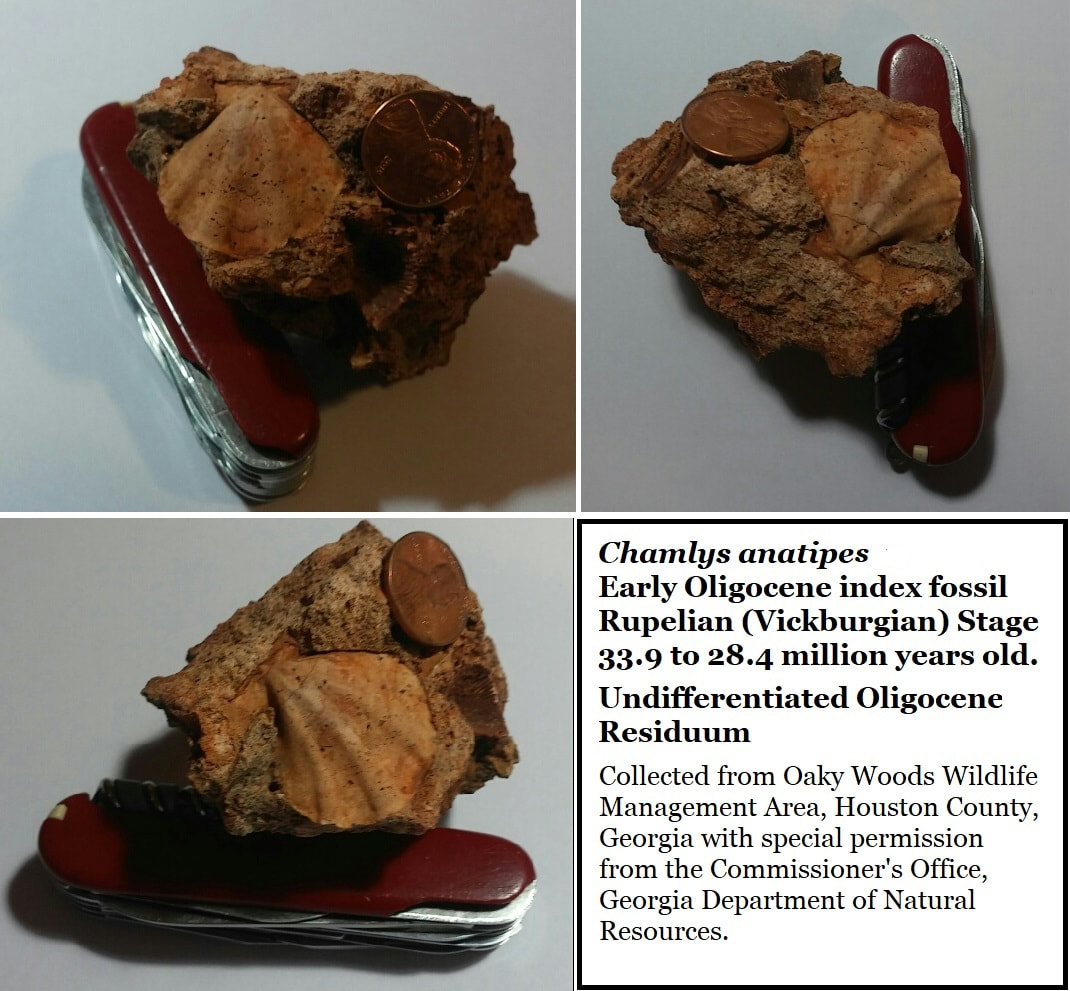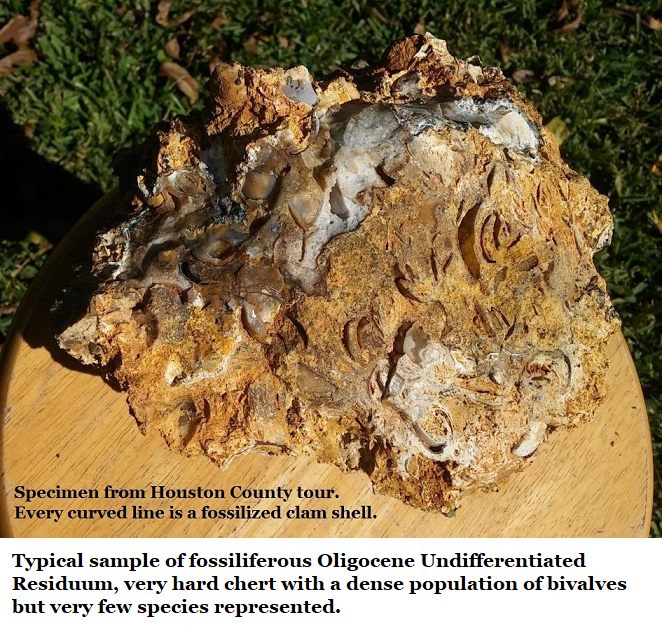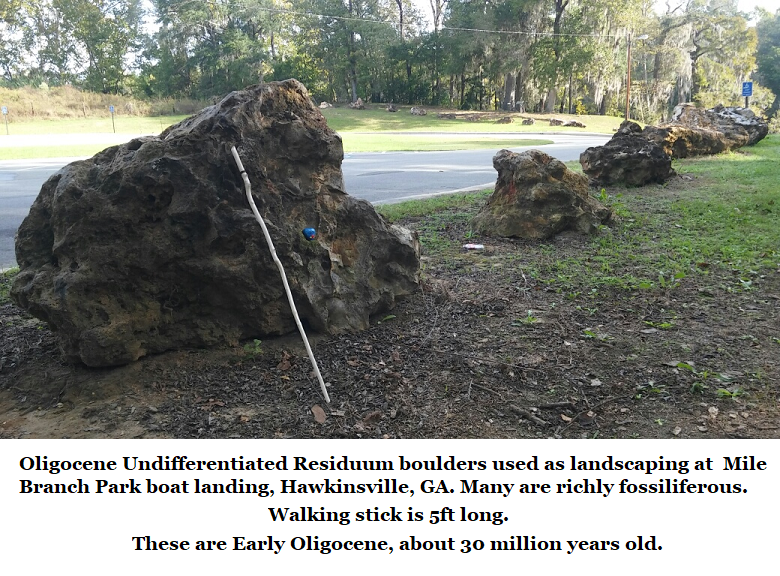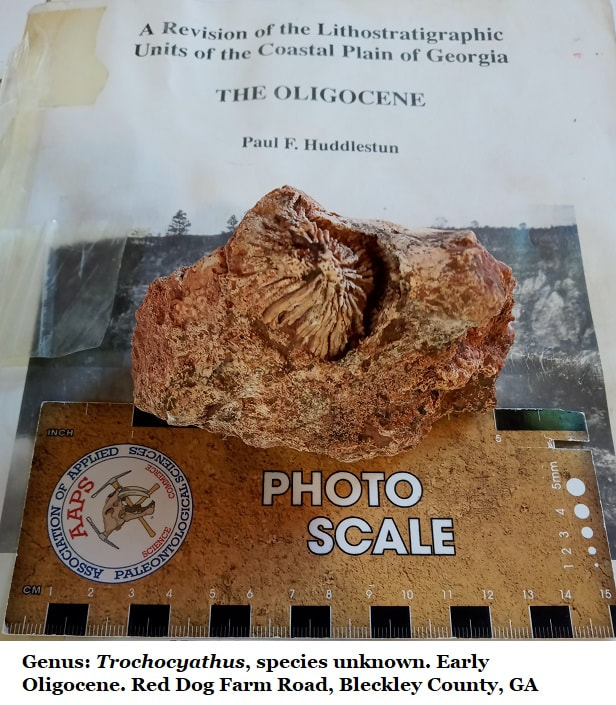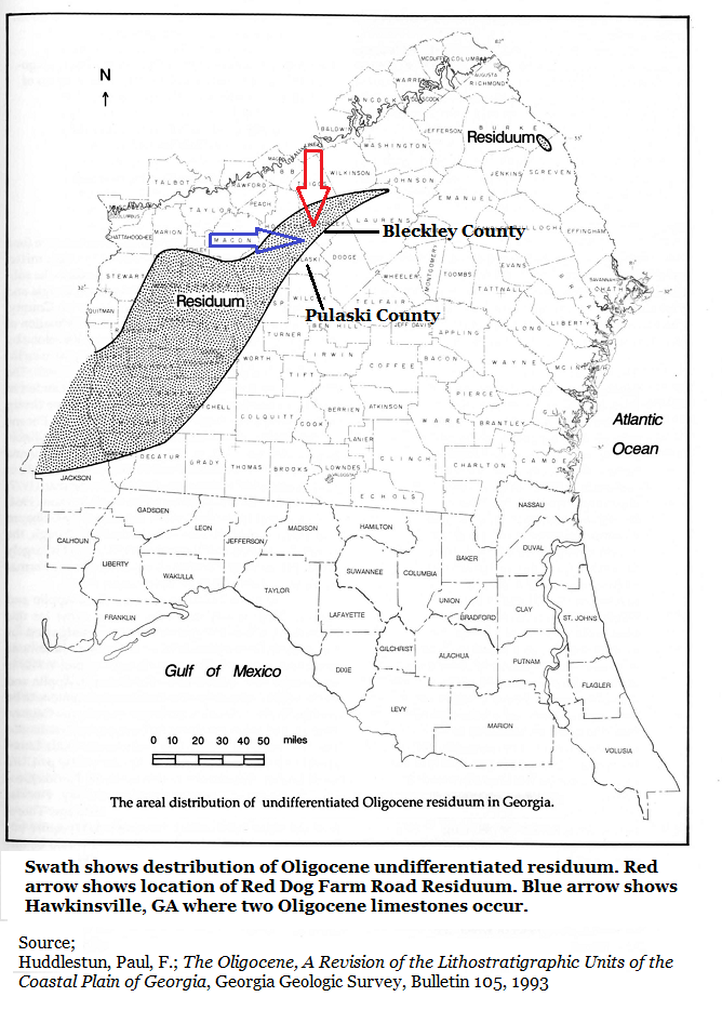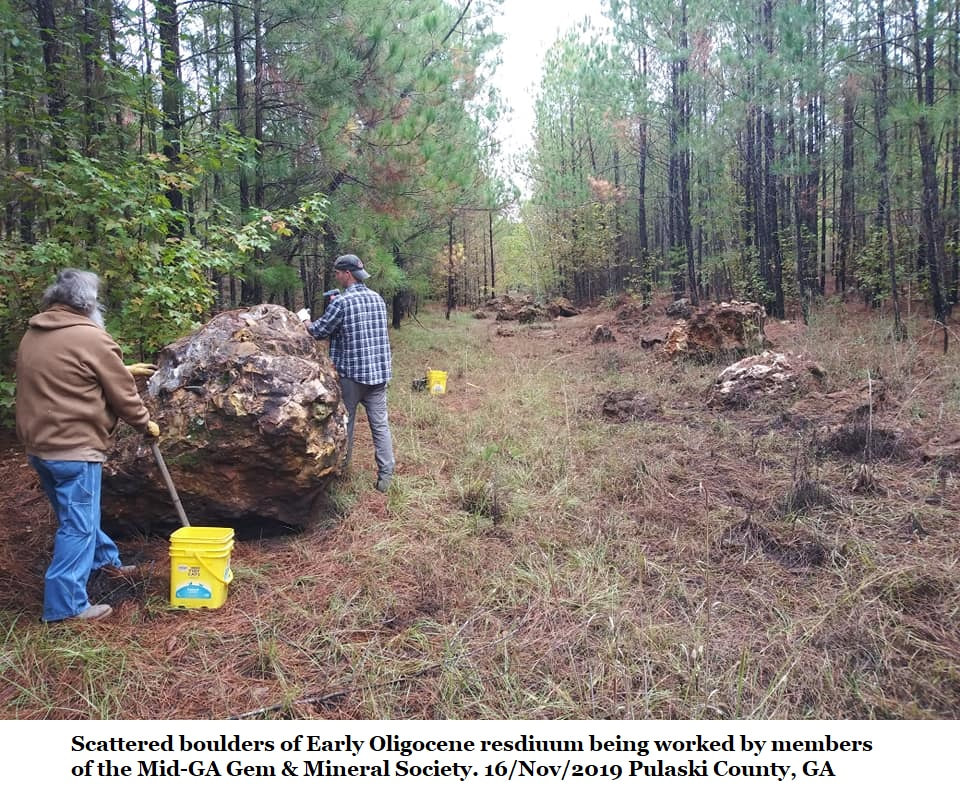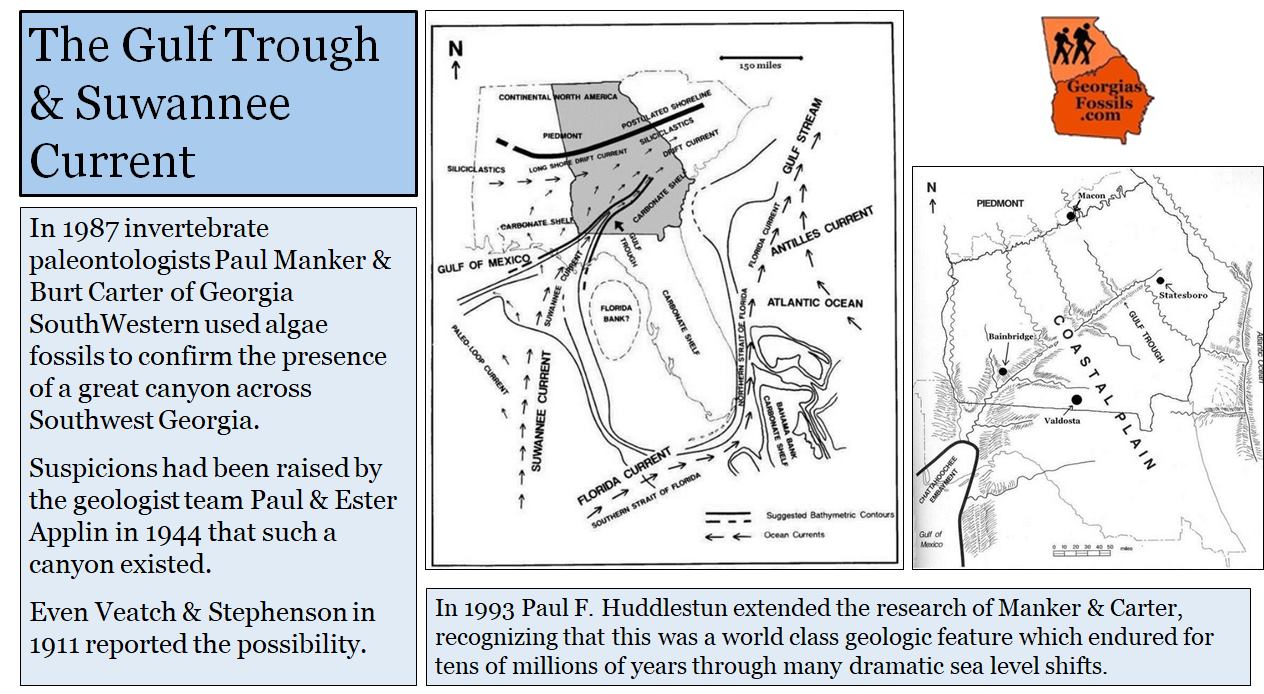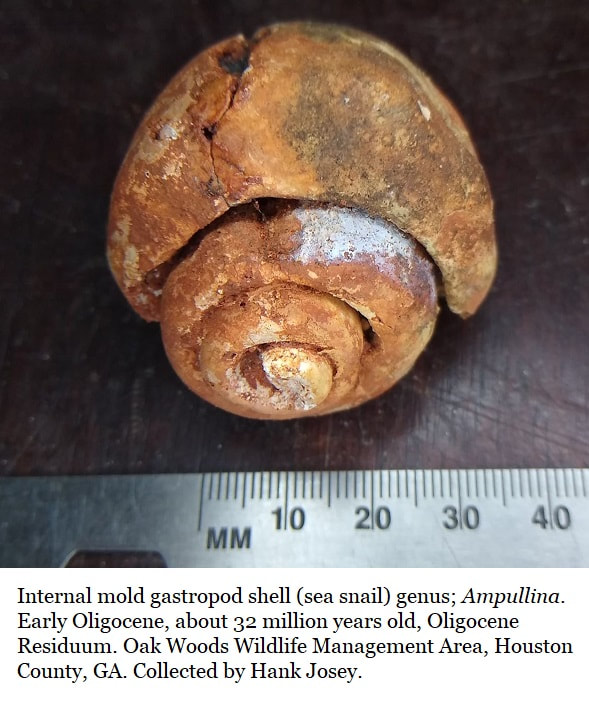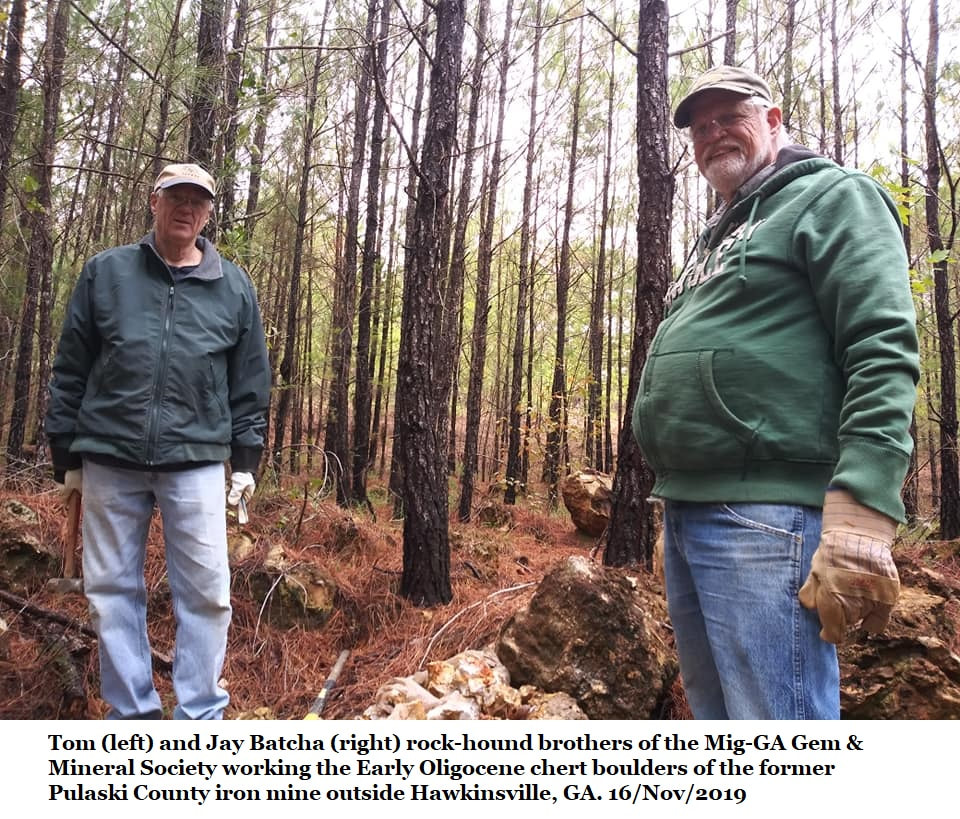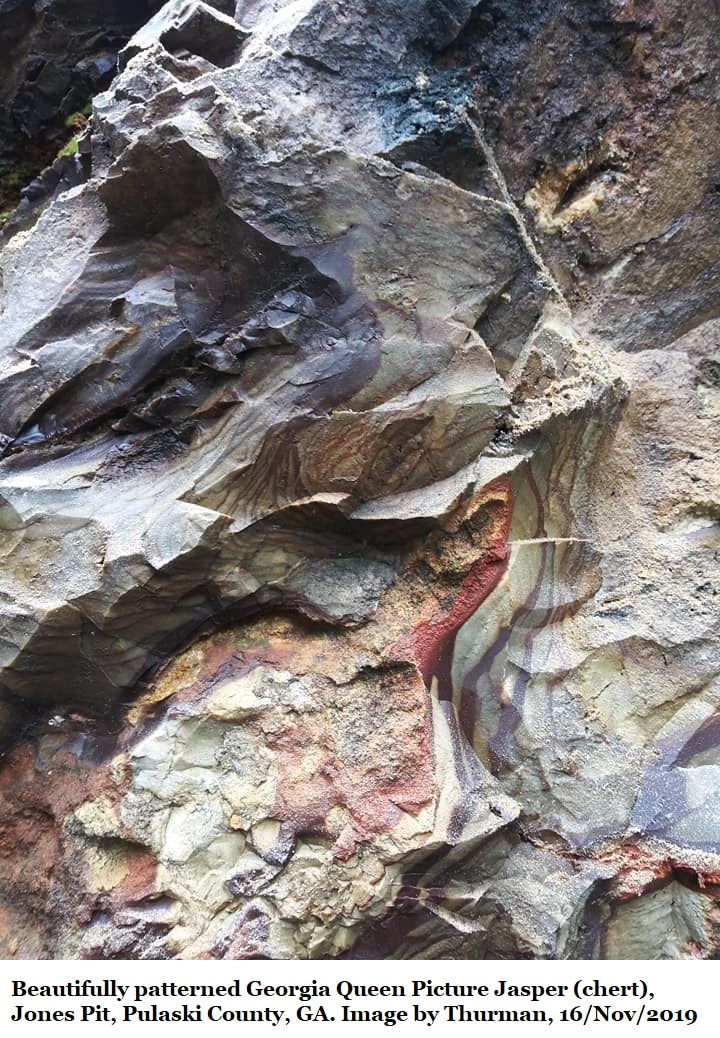15C: Oligocene Undifferentiated Residuum
The power of solution….
The Oligocene undifferentiated residuum is essentially fossil rich chert dornicks and boulders typically suspended in sandy red clay. A dornick is a throwing sized rock, or a hand sample. The fossils and suspending clay matrix are probably of different ages, with the chert being older.
The Oligocene undifferentiated residuum is essentially fossil rich chert dornicks and boulders typically suspended in sandy red clay. A dornick is a throwing sized rock, or a hand sample. The fossils and suspending clay matrix are probably of different ages, with the chert being older.
Okay, what is chert?
Chert is a hard, enduring, often opaque, fine grained sedimentary rock composed of microscopic silica, it can come in many colors depending on what other minerals are present at formation; jasper, agate, flint, chalcedony and onyx are all forms of chert. Even a single dornick can even be highly variable in color.
American Indians of the Coastal Plain knapped chert for their tools. Most commonly the chert of the residuum is brick red (stained by oxidized iron), thought this varies dramatically.
Our Oligocene residuum chert began 23 to 33 million years ago as rather pure beds of calcium carbonate limestone on the seabed, some of which were dense with shelly fossils and some of which completely lacked fossils. The sea levels retreated and the limestone beds were left behind and buried by later terrestrial sediments. Once underground they then became charged with fresh ground water; porous limestone makes a good aquifer. These aquifers held silica rich, acidic groundwater.
Where the microscopic silica was richest, it was absorbed by the porous limestone. Other minerals were also absorbed, and in time these stained the limestone to assorted colors.
The silica slowly replaced and changed the limestone into dense, hard chert. The limestone which didn’t chertify was gradually dissolved by the solution of acidic freshwater, forming caves which continued to grow subsurface until their rooves collapsed forming sinkholes.
Weathering also played its part, the softer limestone weathers quickly compared to the rugged chert. In most cases the heavier chert simply dropped vertically in place when the limestone was dissolved or weathered away.
The silica slowly replaced and changed the limestone into dense, hard chert. The limestone which didn’t chertify was gradually dissolved by the solution of acidic freshwater, forming caves which continued to grow subsurface until their rooves collapsed forming sinkholes.
Weathering also played its part, the softer limestone weathers quickly compared to the rugged chert. In most cases the heavier chert simply dropped vertically in place when the limestone was dissolved or weathered away.
Great for education
This material abundantly produces wonderfully preserved shell fossils and has a deep story to tell over geological processes. The chert is rugged and tolerant of rough handling by small hands. It’s hard to imagine a better source of educational fossils. In parts of Georgia it is abundant and often a nuisance to farmers and construction.
This material abundantly produces wonderfully preserved shell fossils and has a deep story to tell over geological processes. The chert is rugged and tolerant of rough handling by small hands. It’s hard to imagine a better source of educational fossils. In parts of Georgia it is abundant and often a nuisance to farmers and construction.
In the past it was referred to as the Flint River Formation by many authors but in 1993 Huddlestun recognized its history and reassigned these sediments as Oligocene undifferentiated residuum (1).
Is it undifferentiated?
The name Oligocene undifferentiated residuum suggests mixed Oligocene residual sediments possessing both Early and Late Oligocene fossils in a tough chert matrix; but it’s not so simple (things on the Coastal Plain rarely are). Huddlestun questioned if Late Oligocene fossils were even present in the residuum (1).
Definitions:
Early Oligocene
Rupelian Stage (regionally; Vicksburgian Stage)
Dated from 33.9-28.4 million years ago.
Late Oligocene
Chattian Stage (regionally; Chickasawhayan Stage)
Dated from 28.4 to 23.03 million years ago
The name Oligocene undifferentiated residuum suggests mixed Oligocene residual sediments possessing both Early and Late Oligocene fossils in a tough chert matrix; but it’s not so simple (things on the Coastal Plain rarely are). Huddlestun questioned if Late Oligocene fossils were even present in the residuum (1).
Definitions:
Early Oligocene
Rupelian Stage (regionally; Vicksburgian Stage)
Dated from 33.9-28.4 million years ago.
Late Oligocene
Chattian Stage (regionally; Chickasawhayan Stage)
Dated from 28.4 to 23.03 million years ago
*
Huddlestun confirms that researchers in 1916, 1923, 1937, 1940 and 1943 reported mixed Rupelian (Early) and Chickasawhayan (Late) Oligocene fossils in the sediments. Some boulders or dornicks held Early, some held Late Oligocene fossils. But M. E. Hunter, working in southwest Georgia, Alabama and the Florida Panhandle in 1992 failed to identify any Late Oligocene species in the residuum.
In 1995 Dr. Burt Carter at Georgia Southwestern prepared a field trip in southwest Georgia for the Georgia Geological Society (3). The focus of his guide was the Dougherty Plain which rests between Georgia’s Pelham Escarpment and the Fall Line hills. He concurred with Huddlestun that the residuum on southwest Georgia was Early Oligocene.
“Based on the conclusions of Huddlestun (1993) concerning the age of Oligocene deposits in Georgia, all of the Oligocene residuum is considered here to be Early Oliogocene, Vicksburgian Age.”
“Based on the conclusions of Huddlestun (1993) concerning the age of Oligocene deposits in Georgia, all of the Oligocene residuum is considered here to be Early Oliogocene, Vicksburgian Age.”
It would be worthwhile to compare the material Huddlestun mapped in the northern extent of the residuum to see if it is indeed restricted to the Early Oligocene.
Oligocene Sea Levels
During the roughly 10-million-year span of the Oligocene (33.9 to 23.03 mya) climates changed dramatically. There were two high stands where sea levels reached roughly 46 meters (150 feet) above current sea levels.
The first happened at about 33 million years ago (Early Oligocene).
The second at about 26 million years ago (Late Oligocene).
During the roughly 10-million-year span of the Oligocene (33.9 to 23.03 mya) climates changed dramatically. There were two high stands where sea levels reached roughly 46 meters (150 feet) above current sea levels.
The first happened at about 33 million years ago (Early Oligocene).
The second at about 26 million years ago (Late Oligocene).
These high stands are separated by a glacial event and sea level retreat to low stands where coastlines retreated 42 meters (138 feet) below modern sea levels, this happened roughly 28 million years ago.
That’s a 90 meter (295 foot) shift in sea levels.
That’s a 90 meter (295 foot) shift in sea levels.
So, the Oligocene fossils contained in the undifferentiated residuum could easily represent two distinct seas separated by 6 million years and a global glaciation event.
The fossils;
In 1970 Sam Pickering, who went on to become Sate Geologist, referred to this residuum as the Flint River Formation (nomenclature overturned) and recorded the following species (2). Bear in mind that Huddlestun also divided Pickering’s (& others) Flint River Formation into multiple distinct sediments, though the bulk of the material would fall into Undifferentiated Oligocene Residuum.
In 1970 Sam Pickering, who went on to become Sate Geologist, referred to this residuum as the Flint River Formation (nomenclature overturned) and recorded the following species (2). Bear in mind that Huddlestun also divided Pickering’s (& others) Flint River Formation into multiple distinct sediments, though the bulk of the material would fall into Undifferentiated Oligocene Residuum.
Vertebrates:
None reported by Pickering
Echinoids (sand dollars & sea urchins):
Gagaria mossomi Rare
Clypeaster cotteaui Rare
Rhyncolampus gouldii Common
Bivalves:
Glycymeris cookie Common
Glycymeris suwaneensis Rare
Pecten suwaneensis Rare
Ostrea mauricensis Rare
Lima halensis Rare
Crassatellites paramesus Very Abundant
Phacoides wacissanus Common
Chione bainbridgensis Common
Corals:
Trochocyathus sp. Rare
Foraminifera:
Quinqueloculina vicksburgensis Common
Pyrgo byramensis Rare
Pararotalia mexicana var Abundant
Lepidocyclina undosa Abundant
Reusella byramensis Abundant
None reported by Pickering
Echinoids (sand dollars & sea urchins):
Gagaria mossomi Rare
Clypeaster cotteaui Rare
Rhyncolampus gouldii Common
Bivalves:
Glycymeris cookie Common
Glycymeris suwaneensis Rare
Pecten suwaneensis Rare
Ostrea mauricensis Rare
Lima halensis Rare
Crassatellites paramesus Very Abundant
Phacoides wacissanus Common
Chione bainbridgensis Common
Corals:
Trochocyathus sp. Rare
Foraminifera:
Quinqueloculina vicksburgensis Common
Pyrgo byramensis Rare
Pararotalia mexicana var Abundant
Lepidocyclina undosa Abundant
Reusella byramensis Abundant
References:
(1) A Revision of the Lithostratigraphic Units of the Coastal Plain of Georgia, THE OLIGOCENE, Paul F. Huddlestun, Georgia Department of Natural Resources, Georgia Geologic Survey, Bulletin 105, 1993
(2) Stratigraphy, Paleontology, and Economic Geology of Portions of Perry and Cochran Quadrangles, Georgia; Sam M. Pickering Jr., Bulletin 81, The Geological Survey of Georgia, Dept of Mines, Mining & Geology 1970.
(3) Paleogene Carbonate Facies and Paleogeography of the Dougherty Plain Region; Burchard D. Carter, Department of Geology & Physics, Georgia Southwestern State University, 30th Annual Field Trip, Georgia Geological Society, Georgia Geological Society Guidebooks, Vol15, Number 1; October 1995
(1) A Revision of the Lithostratigraphic Units of the Coastal Plain of Georgia, THE OLIGOCENE, Paul F. Huddlestun, Georgia Department of Natural Resources, Georgia Geologic Survey, Bulletin 105, 1993
(2) Stratigraphy, Paleontology, and Economic Geology of Portions of Perry and Cochran Quadrangles, Georgia; Sam M. Pickering Jr., Bulletin 81, The Geological Survey of Georgia, Dept of Mines, Mining & Geology 1970.
(3) Paleogene Carbonate Facies and Paleogeography of the Dougherty Plain Region; Burchard D. Carter, Department of Geology & Physics, Georgia Southwestern State University, 30th Annual Field Trip, Georgia Geological Society, Georgia Geological Society Guidebooks, Vol15, Number 1; October 1995

